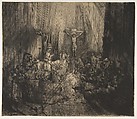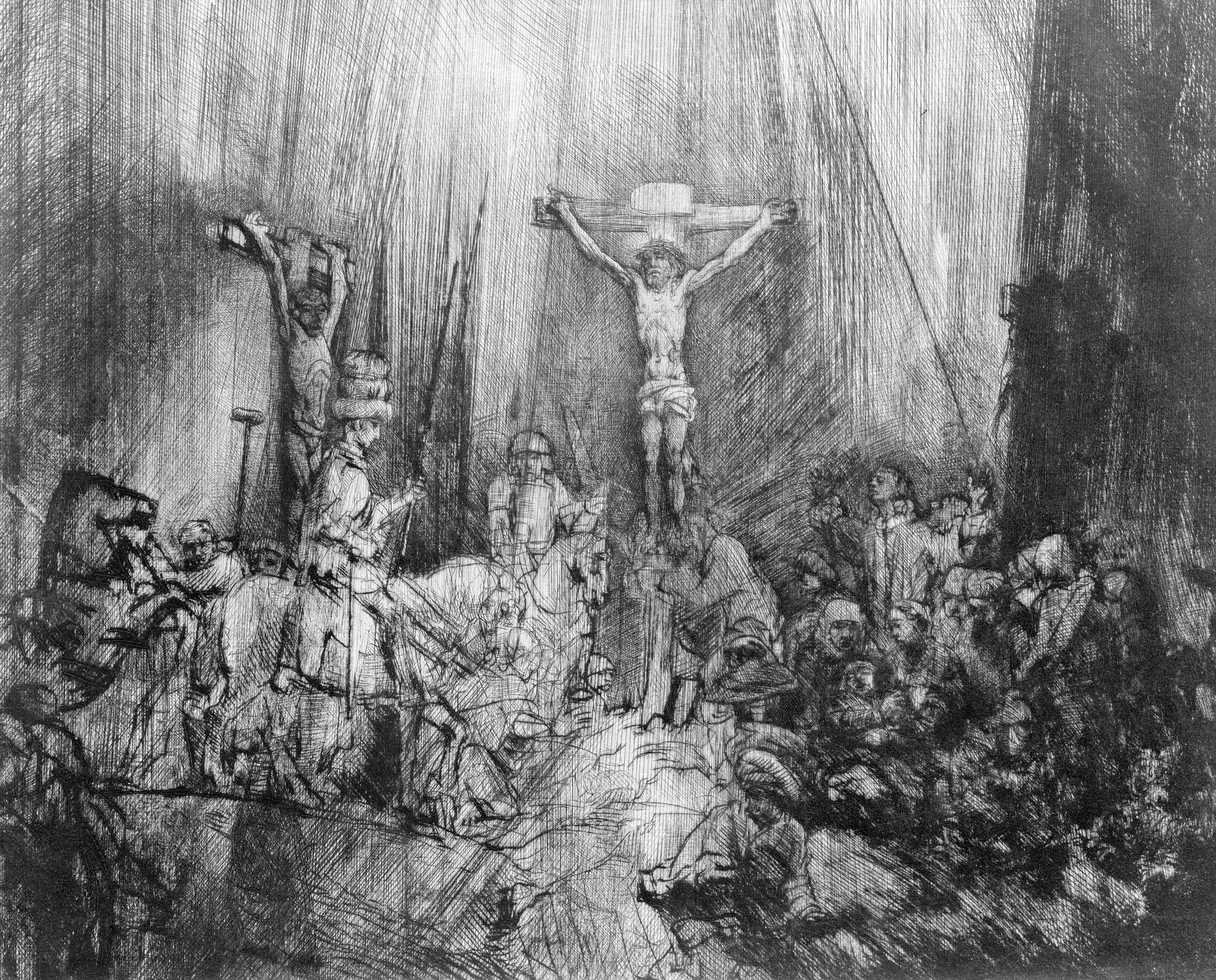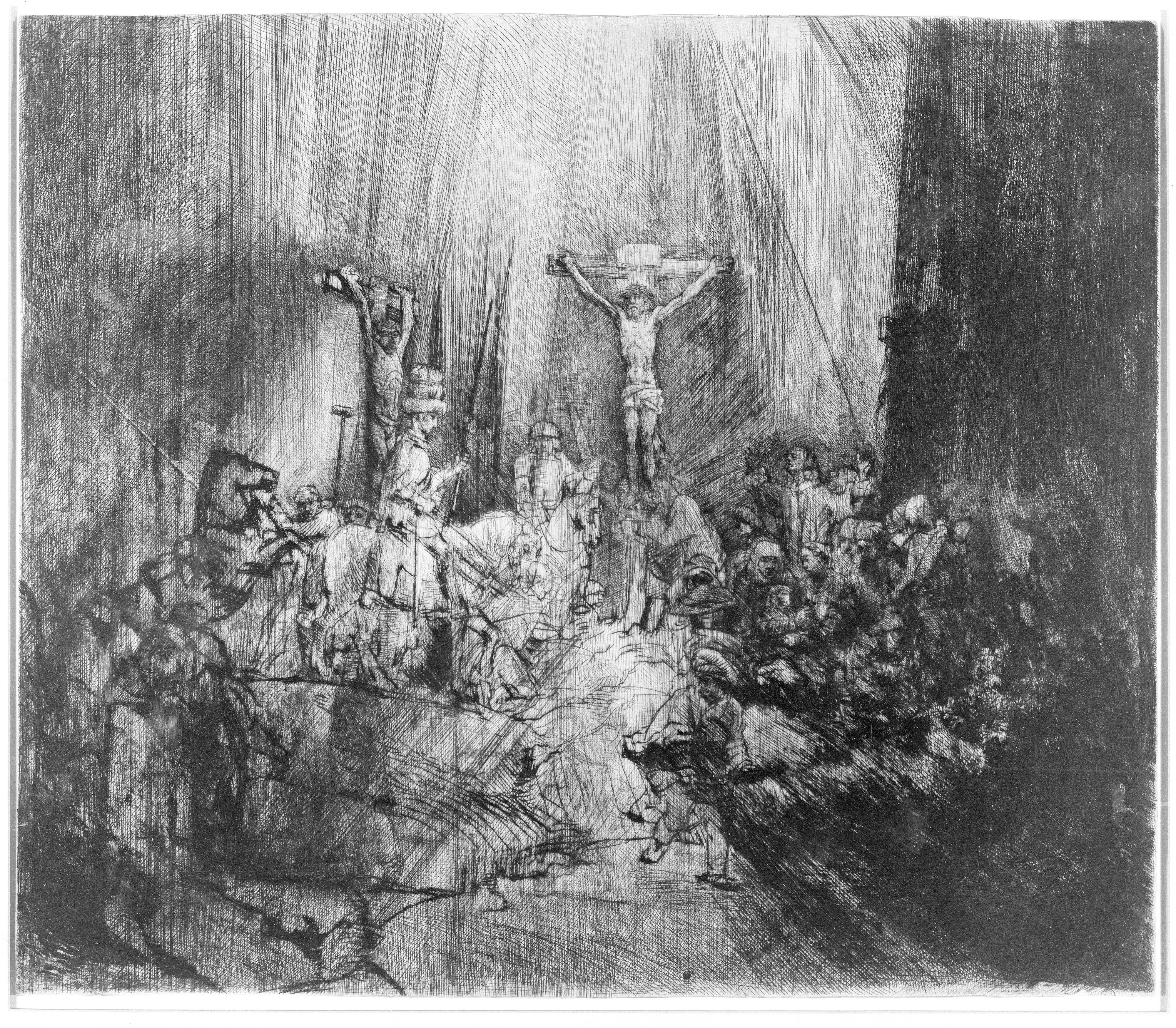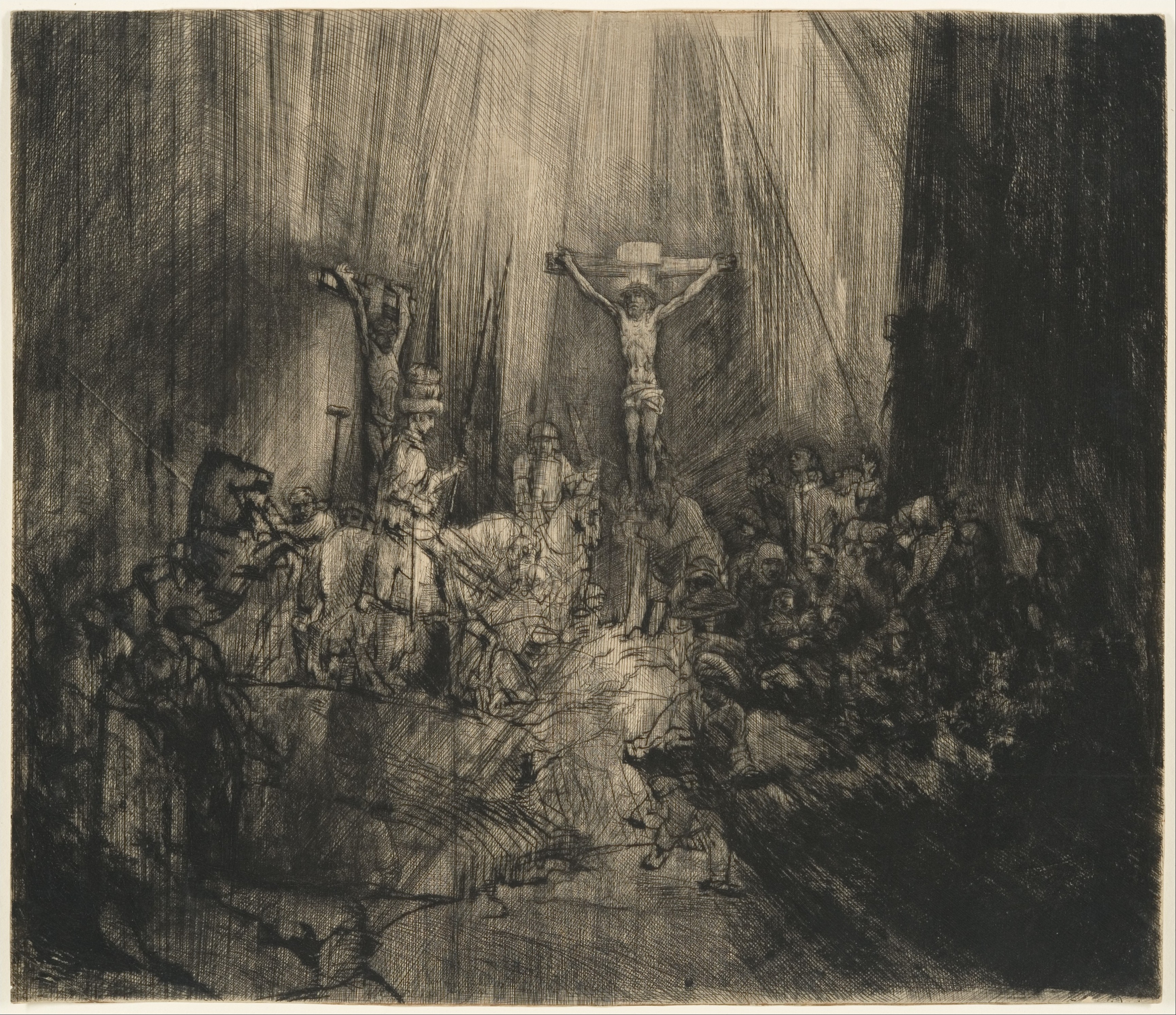Christ Crucified between the Two Thieves: The Three Crosses
Rembrandt (Rembrandt van Rijn) Dutch
Not on view
In the fourth state of this print, Rembrandt completely transformed the plate by scraping away large portions of the original composition (see also the second state, 41.1.31), some of which are still visible underneath the hatching. He covered the sky with strong parallel lines that veil the remaining figures on both sides, and he redrew Christ's face to show his mouth open and his eyes half-closed. These changes actually alter the subject of the print: instead of showing the centurion's conversion after Christ's death, the image now focuses on the figure of Christ in the final moments of life, as he cries, "My God, my God, why hast thou forsaken me?" (Matthew 27:46).
Due to rights restrictions, this image cannot be enlarged, viewed at full screen, or downloaded.
This artwork is meant to be viewed from right to left. Scroll left to view more.





